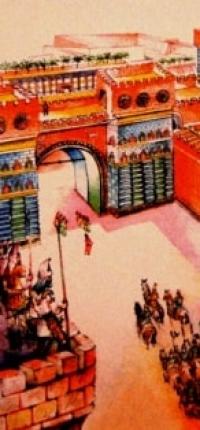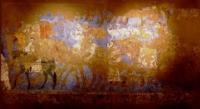You are here
Palace Ihshids in Samarkand.


Guided tour activities in Samarkand.
“He who conquers himself is the mightiest warrior”
Confucius.
Tourist-heavy area in Uzbekistan.
The dynasty of Samarkand ihshids was a filiation from the Kang dynasty, governing in Sogdian principalities from Qangui’s period. According to the Chinese sources, alongside with dynasties of Khorezm kings and Bukhara governors, this dynasty went back to Yuech-chi’s clan - “House of Chaovu”.
This clan differed from the Kushans and was close to royal dynasties of the Sarmatian circle, what is proved by analogy of tamgas on coins from Sogd, Bukhara and Khorezm with signs of ancient Sarmatians from the Black Seaboard and nomads from southwestern Mongolia.
Reigning dynasties from “House of Chaovu” carried their origin back to Siyavush and managed to hold the power down to the Arabian conquest. The significant discovery was done in 1965 - at the site of Afrasiab was excavated the palace of Samarkand ihshids dated from the VII – VIII centuries.
The palace was located in the heart of the medieval city, behind the third wall, and occupied more than one hectare. All structures were built from adobe blocks, and the upper parts of walls, arches and vaults above narrow corridors - from adobe brick. Four wooden columns supported ceiling beams in the throne hall.
It was decorated with remarkable wall paintings, becoming one the most famous samples of medieval Central Asian art. Now, their fragments are exposed in the museums of Samarkand.
The southern wall of the hall exposed a picture of Chaganian governor’s embassy arriving to Sogdian king Varhuman (656 - 696) in order to match his daughter. The bride on the white elephant heads wedding procession. Girlfriends, respectable dignitaries on camels and horses accompany her.
Further, a big figure of some equestrian, most likely he is a groom - the governor of Samarkand. Inscriptions in Sogdian decorate faces, hands and especially clothes of the characters. On the northern wall, there was a scene of a battle running on the bank of the river.
The horsemen are fighting with wild animals before men and women sitting in the boats. The eastern wall, to the left from the door, exposed young men swimming in the sea, birds and animals, and to the right - Hindus.
On the western wall, behind a throne, there was a reception scene with Chinese embassy in the center, Chaganian - to the left and Chach and Eastern Turkistan embassies - to the right.
Southward from the throne hall there were rooms, also decorated with wall paintings and wooden statues, including figures of dancers in niches. Some images go to pre-Arab Sogdian literature and folklore, which riches is often mentioned in written sources.
The palace had own temple of fire, also excavated. The palace was reconstructed several times; the last reconstruction had been done just before the Arabian conquest.
Finally, the palace was ruined in the 770s, during suppression of Mukana’s revolt, otherwise the revolt of “people dressed in white”.
Authority:
Alexey Arapov. Samarkand. Masterpieces of Central Asia. Tashkent, Sanat. 2004.







